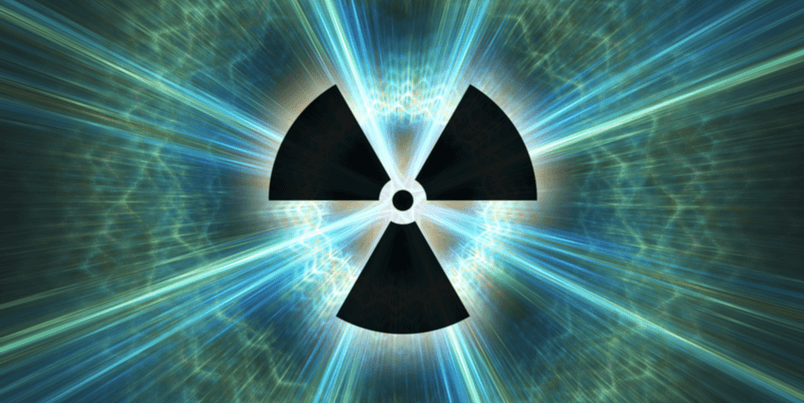
The successful detection, identification and mitigation of radioactive threats relies on having access to the right equipment, knowing which equipment to select in which environment and being able to interpret the readings that are obtained.
In situations where there is a known presence of radioactive materials, the primary objective will be to monitor and measure in order to improve awareness - whether to establish the strength of the radioactive field, to define the boundaries of the radioactive area or to monitor the spread of contamination.
In the case of radiation protection, the focus shifts from the monitoring of the environment to the monitoring of people by providing individuals with the information they need to prevent the harmful effects of radiation exposure.
If the objective is radiation search, then radiation is suspected to be in an area where it is not wanted or not normally expected to be found.
For first responders, customs and border inspectors or radiation security personnel, this type of activity is likely to involve the use of highly sensitive sensors that are designed to seek out smaller, concealed radioactive sources materials while filtering out those sources that are legitimately present.
The development of radiation detection tools
While the science and physics of radiological materials has remained unchanged in the eighty plus years since the first nuclear tests of the 1940s and 1950s, the technology that supports radiation detection continues to increase in its accuracy, reliability and sophistication.
When compared with the earliest days of radiation detection, when Antoine Becquerel first sought to measure and observe radiation via a photographic plate, modern-day radiation professionals have access to a diverse range of specialist tools covering a wide variety of applications.
Naturally though, scientists continue to look for ways to improve the efficiency, accuracy and performance of radiation instrumentation.
In an article published in the US Journal of Applied Physics in 2019, physicists from the University of Florida and Pacific Northwest National Laboratory describe how the improvement of radiation detectors can be used to enhance global nuclear security.
As Paul Johns and Juan Nino explain, future improvements in radiation detectors are most likely to rely on the identification of better sensor materials and the development of smarter algorithms that process detector signals even more accurately.
Because end-users do not normally have a background in physics, it is also vital that they are able to make the right decisions based on the signals they receive.
Says Johns: “The algorithms used to energy-stabilize and identify radioactive isotopes from a gamma ray spectrum are key to making detectors useful and reliable.
"When sensors can provide better signal resolution, algorithms are able to more accurately inform users about the radiation sources in their environment."
Radiation training for real-world engagement
Alongside ongoing improvements in detector technology, radiological training and training tools are also critical factors in preparing radiation professionals for the challenges of real-world incidents.
Where once “live” radiation training would have been limited to specialist teams and conducted solely within specialist facilities, there is now the opportunity for trainees of all levels and backgrounds to experience the features of radiation in any environment and in a completely safe way.
With the help of intelligent simulator detector equipment, trainees are able to test and apply the fundamentals of radiation including the ALARA Principle and the significance of Time, Distance and Shielding.
Crucially too, they can continue to develop proficiency in the use of their detection equipment through enhancing their skills in the measuring and sampling of radiological isotopes and the monitoring of contamination.
While these key radiological concepts can be introduced and to some extent solidified within a classroom environment, it is only through participation in hands-on, real-world exercises that students can begin to truly experience the characteristics, complexities and challenges of radiological threats.
Simulator-based training provides the opportunity for trainees to practice with instruments that replicate the look, feel and behaviour of actual detectors - and that enable them to test their responses to powerful electromagnetic sources that safely simulate ionising radiation.
Included among Argon Electronics' radiation simulator product range are simulators for the RadEye GF-10, the FH 40 G, RDS-100 and PDR-77 probe sets, the AN/VDR-2/PDR77, the Canberra ADM300 series and the Mirion RADOS RDS-200.
Argon's contamination simulators include the AN/PDR-77 Beta SIM Probe, the AN/PDR 77 Alpha SIM Probe, the GMP-11 Simulator, the 44-9 Probe Simulator, the Mini 900 Simulator and the 6140AD-K Simulator.
Preventing radioactive materials from being used for harmful purposes, and mitigating such events should they occur, is an ongoing challenge for those tasked with radiological protection and response.
For instructors, the implementation of a simulator-based training approach can be hugely valuable in helping them to provide their trainees with the hands-on experience that they need to convert theoretical knowledge into action.
If you are interested to learn how simulator-based training can enhance your radiological training programmes, please register to join one of our bi-weekly live product demonstrations led by our North American business development manager, Sergeant Major (Rtd.) Bryan W Sommers.







